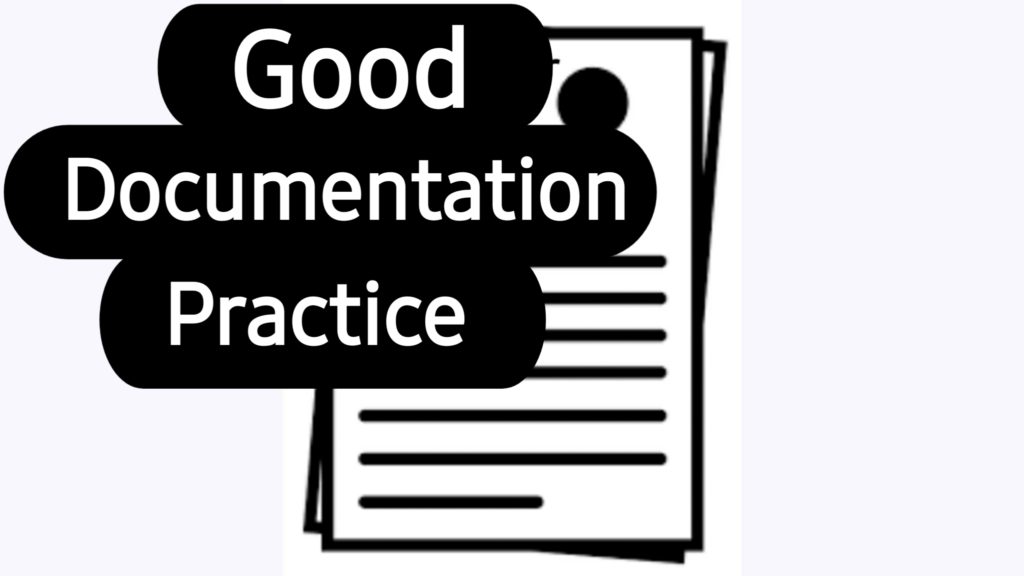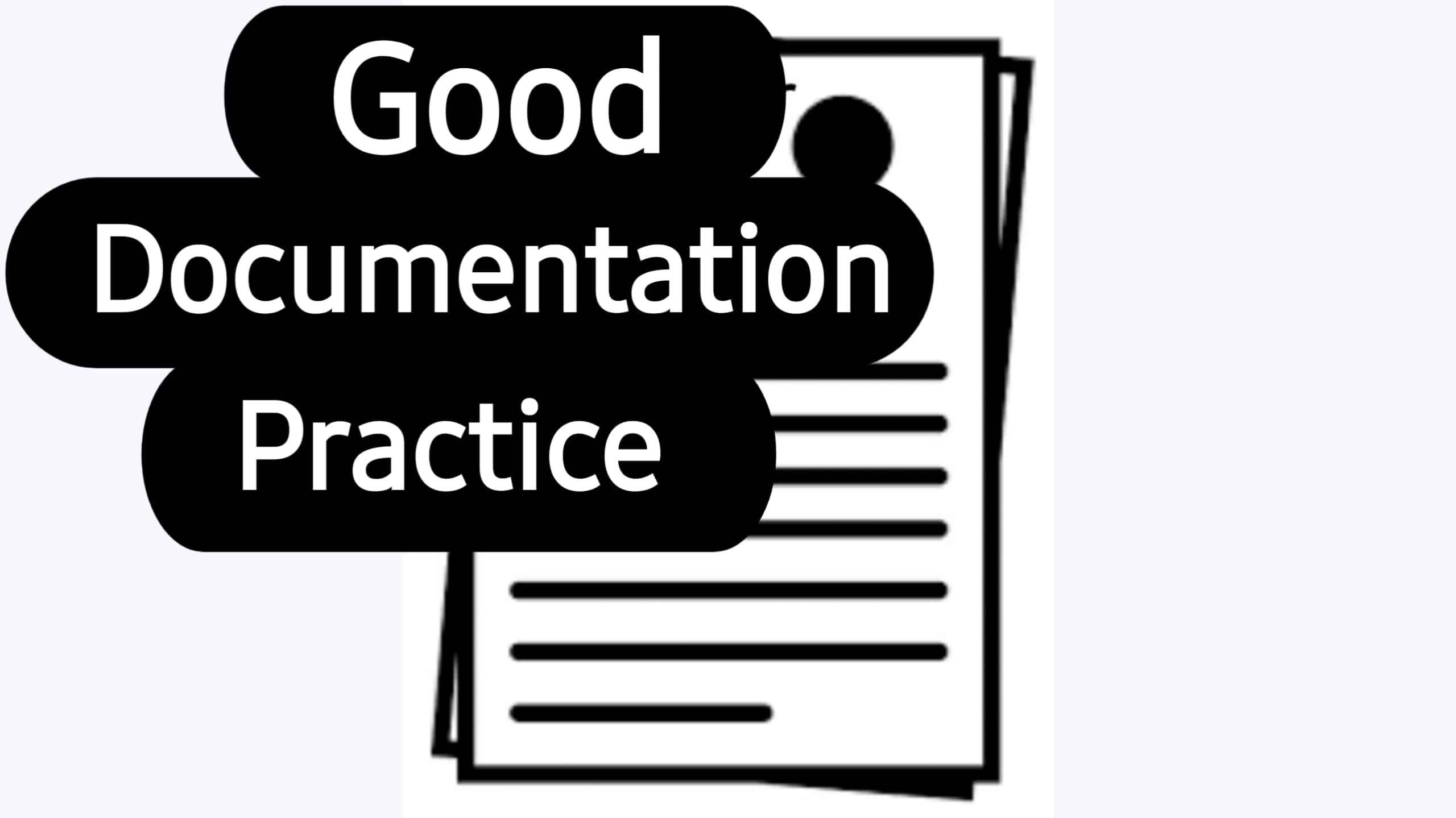Documentation forms the base of any company’s Quality Management System and serves as an essential GMP requirement. Anyone handling GMP documents and documentation systems must understand the regulatory requirements.
Requirement of Good Documentation Practice?

Good Documentation Practice is essential for proof of invention, company operations, technology transfer, regulatory requirements, and liability protections. The Documentation System addresses what needs to be documented, what should be documented, ensuring comprehensive documentation, avoiding contradictions in documents, and document control.
Important Documents include specifications, STPs, SOPs, master batch records, and validation protocols. Data Collection Documents such as production batch records, QC records (COA), validation records, equipment and facility logbooks, calibration and maintenance records, and vendor history files. Reports include validation reports, facility qualification reports, product development reports, and process flow diagrams.
Related: GMP/cGMP Principle
Understand GDocP in Pharmaceuticals:
- Good Documentation Practices help organizations to efficiently create and control documents across all parts of their business.
- GDP legally proves that work was adequately planned and performed at the given time. It helps troubleshoot technical and managerial problems, provides a written company history and product information, and demonstrates to regulators that the company fulfills its commitments.
- GMP documents must be clear, comprehensive, not overlapping in their content, and must cover all essential aspects in sufficient detail. Documentation failure comprises a significant percentage of non-conformances during GMP audits.
- Develop standards for preparing documentation and establish the document structure. Outline guidelines for reviewing and correcting documentation and improving the review and approval process must be in place. Also, develop strategies to revise existing documentation.
- Write concise, user-friendly documents. Agree on a document numbering method to simplify and standardize tracking, minimizing confusion due to frequent changes. Careful planning is necessary to manage links and referrals between documents to ensure that an approved document does not refer to an unapproved one. Review referrals to determine necessity, as too many references in documents may lead to operational issues.
- Documents must specify the Title, Purpose/Objective, and Scope. Reproduced documents should be clear and legible. Any alterations made to a document/record entry must be signed and dated if there is a change to any critical result or value that requires justification. Data recording must be concurrent.
SOPs and Records:
1. Receipt of Materials;
Standard Operating Procedures and records Shall be written for the receipt of each delivery of raw, primary, and printed packaging material.
The records of the receipts shall include;
- The detailed information of material Name on the delivery items and the container numbers.
- The date of receipt.
- The Name of manufacturers and suppliers.
- The manufacturer’s batch or reference number.
- The total quantity, and the number of containers, quantity in each container received.
- The control reference number is assigned after receipt.
- Any other relevant comment or information.
- As appropriate, there shall be written standard operating procedures for the internal labeling, quarantine, and storage of starting materials, packaging materials, and other materials.
- Standard Operating Procedures shall be available for each instrument and equipment, which shall be placed near the related instrument and equipment.
2. Sampling:
- There shall be written Standard Operating Procedures for sampling, including the person(s) authorized to require the samples.
- The sampling instructions shall include:
- Sampling method and sampling plan.
- The Name of the equipment to be used.
- Any precautions to be observed to avoid contamination of items or materials or any deterioration in their quality.
- The number of samples to be taken.
- The types of sample containers to be used.
- Any specific precautions to be observed, especially regarding sampling of sterile or hazardous material.
3. Batch Numbering:
- Standard Operating Procedures shall describe the detailed information of batch (lot) numbering to ensure that every batch of intermediate, bulk, or finished product carries a specific batch number.
- The batch numbering Standard Operating Procedures applied to a processing stage and the respective packaging stage must be the same or traceable to show that they belong to one homogenous mix.
- The allocation of batch numbers must be immediately recorded in a logbook or through an electronic processing system. The record should include the allocation date, product identity, and batch size.
4. Testing:
Written procedures should exist for testing materials and products at various stages of manufacture, detailing the methods and equipment to use. Record the tests conducted.
5. Records of analysis:
- The records shall include the following data:
- Name of item or product and, therefore, the dosage form.
- Batch number and, where appropriate, the manufacturer and supplier.
- References to the relevant specifications and testing procedures.
- Test results, including observations and calculations, and regard to any specifications (limits).
- Dates of testing:
- Initials of the persons who performed the testing.
- Initials of the persons who verified the testing and, therefore, the detailed calculations.
- A statement of release or rejection.
- Signature and date of the designated responsible person.
- There shall be written standard operating procedures and the associated records of actions taken for:
- Equipment assembly and validation.
- Analytical apparatus and calibration.
- Maintenance, cleaning, and sanitation.
- Personnel matters include qualification, training, clothing, and hygiene.
- Environmental monitoring.
- Pest control.
- Complaints.
- Recalls made.
- Returns received.
6. Specifications:
- For Raw materials and packaging materials. They shall include:
- The designated Name and internal code reference.
- Reference, if any, to a pharmacopoeial monograph.
- Qualitative and quantitative requirements with acceptance limits.
- Complete information with address with original material supplier.
- Specimen of printed material.
- Sampling direction and testing or procedures with reference.
- Storage conditions; and a maximum period of storage before re-testing.
- For Product Containers and Closures – Lay down and follow a written cleaning schedule whenever using bottles. If bottles are not dried after washing, rinse them with de-ionized water or distilled water, as needed.
- Specifications should be available for in-process and bulk products for in-process materials, intermediates, and bulk products. Verify the specifications.
- For Finished Products – Include dedicated specifications for finished products:
- The product name with item code reference.
- The formula with its reference.
- Sampling directions and testing procedures with references.
- Description of the dosage form and package details.
- Acceptance limits for materials and qualitative and quantitative requirements.
- Storage conditions and precautions, if applicable, and shelf-life.
Master Formula Records:
Master Formula Records– The procedure with details of the products ( product name and batch size) shall be included in master formula records. The technical staff shall be included in its preparation, i.e., the head of production and quality control. The Master Formula shall include:-
- The Name of the product with item code reference relating to its specifications.
- The product’s patent and the detail of generic Name, dosage form description, strength, the product composition, and size batch.
- Starting materials with Name, quantity, and reference number of all to be used.
- A statement of the expected final yield with the acceptance limits and relevant intermediate yields, where applicable.
- The methods to be used for preparing the critical equipment include cleaning, assembly, calibration, and sterilization.
- Detailed stepwise processing instructions and the time taken for each step.
- The instructions for in-process controls with their limits.
- Storage conditions requirements for the products, including the container, labeling, and special storage conditions where applicable.
- No special precautions are to be observed.
- Packing details and specimen labels.
Packaging Records:
There shall be authenticated packing instructions for every product and their pack size with type. These shall include the following:
- Product name with information with a detailed description of dosage form, strength, and composition.
- The pack’s size in terms of the number of doses, weight, or volume in the final container.
- Complete a list of all the packing materials required for standard batch size, including quantities, sizes, and types, with the item code or reference number relating to the details of each packing material.
- Reproduction of the relevant printed packing materials and specimens indicating where the batch number and expiry date of the product have been applied.
- Special procedures and precautions to be followed like area and instruments to confirm the line clearance before the operations begin.
- Description of the packing operation, including operations and equipment to be used.
- Details of controls of in-process with instructions for sampling and its procedure.
- Upon completion of the packing and labeling operation, a reconciliation shall be made between the number of labeling and packaging units issued, the number of units labeled and packed, and the excess returned or destroyed. any unusual discrepancy in the numbers shall be carefully examined before releasing the final batch.
Batch Processing Records:
- There shall be a Batch Processing Record for each product. The method of preparation of such records included in the Master Formula with the method of preparation records shall be designed to avoid transcription errors.
- Before starting any process, ensure that the equipment and workstation are clear of previous products, documents, or materials not used or unplanned are removed and that the equipment is clean and suitable for use.
- During processing, the following information like each action shall be stored or recorded along with dated and signed by the person responsible for the processing operations:
- The Name of the product.
- The number of the batch being manufactured.
- Sign of the operator of different production steps and the person who checked each of these operations.
- The b.no. Furthermore, the analytical control number and the quantities of all the materials were weighed.
- Record the control in-process and the sign with the date of the person involved in carrying them out and the results.
- The yield is obtained at a different stage.
- If the yield obtained is less than the recommendation, it should be comments or explanations for significant deviations.
- If any deviation from the master formula, it must be with special notes with a signed authorization.
Related: Pharmaceutical Audit
Documentation and Records:
Good Documentation Practice is an essential part of the QA system and, as such, shall be associated with all aspects of Good Manufacturing Practices (GMP). It aims to define all materials’ specifications, including manufacturing methods and control, to make sure personnel concerned with manufacturing are knowledgeable. The person should decide whether or not to release a batch of a drug purchasable and supply an audit trail that shall permit investigation of the history of any suspected defective batch.
- Documents designed, prepared, reviewed, and controlled, wherever applicable, shall suit these rules:
- Documents shall be approved, signed, and dated by appropriate and authorized persons.
- Documents shall specify the title, nature, and purpose. They shall be laid call in an orderly fashion and be easy to see. Reproduced documents shall be clear and legible. Documents shall be regularly reviewed and maintained so far. Any alteration made within the entry of a document shall be signed and dated.
- Records shall be completed at the time of operation so that each significant activity concerning the manufacturing of pharmaceutical products is traceable. Records and associated Standard Operating Procedures (SOP) shall be retained for a minimum of one year after the expiry date of the finished product.
- Electronic processing systems or other reliable means could also record data. However, Master Formulae and detailed operating procedures regarding the system in use should be available in the text to facilitate checking the records’ accuracy.
- Electronic processing methods handle where documentation occurs, and authorized persons enter or modify data in the computer. Modifications and deletions must be recorded. Access should be restricted by ‘passwords’ or other means, and independent checks of critical data entry results are necessary.
- Batch records stored electronically must have appropriate backup protection. All relevant data should be readily available during the retention period.

Naresh Bhakar is the Founder and Author at Pharmaguddu.com, bringing his extensive expertise in the field of pharmaceuticals to readers worldwide. He has experience in Pharma manufacturing and has worked with top Pharmaceuticals. He has rich knowledge and provides valuable insights and data through his articles and content on Pharmaguddu.com. For further inquiries or collaborations, please don’t hesitate to reach out via email at [email protected].

